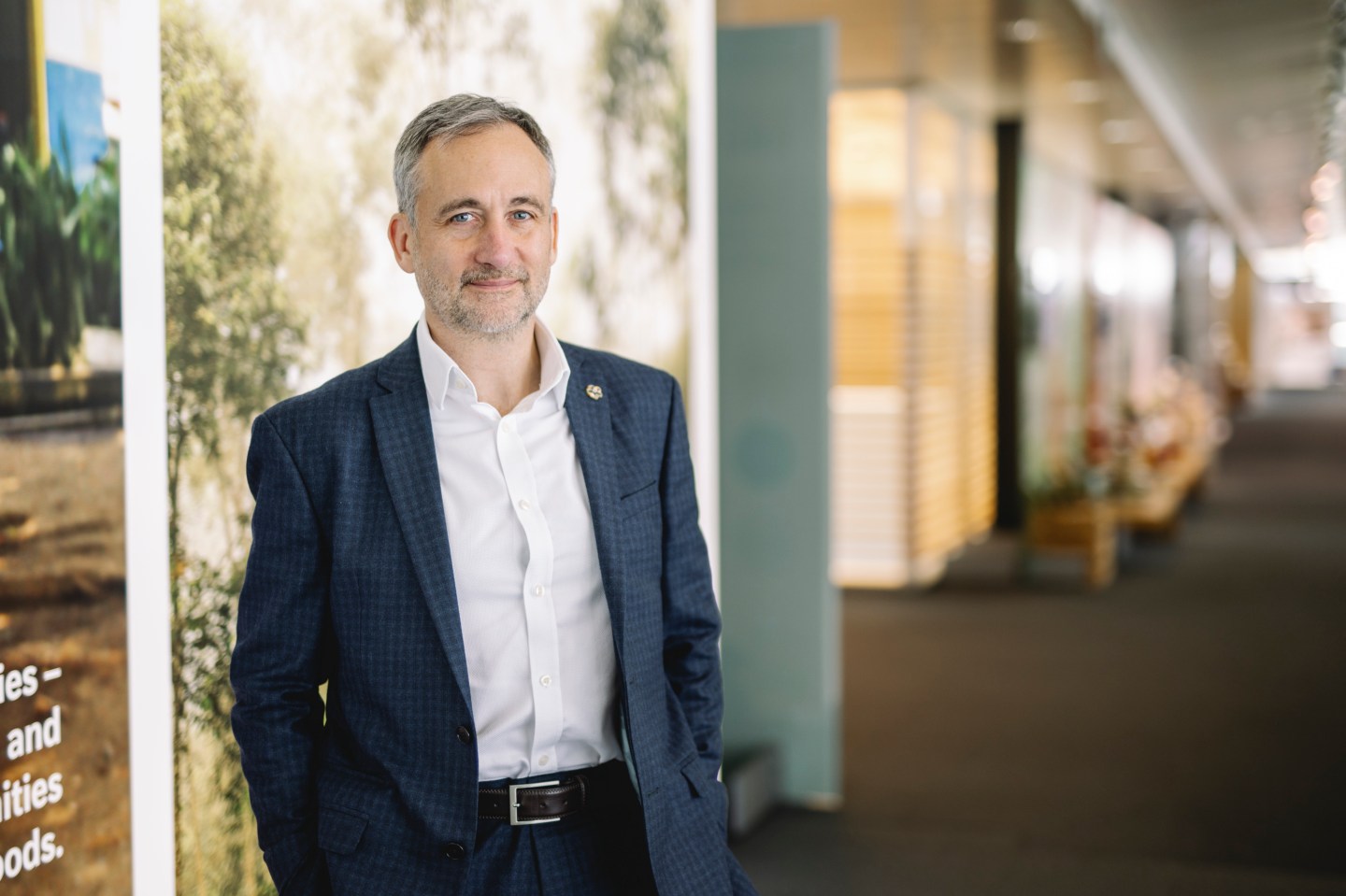Good morning. At least one sector has shrugged off the current economic uncertainty, and now the industry leader has some company: Novo Nordisk’s Ozempic is seeing stiff competition from Eli Lilly as both pharmaceutical giants grapple with surging demand for weight-loss drugs.
Indianapolis-based Eli Lilly (no. 142 on the Fortune 500) is the maker of Mounjaro, classified as Type 2 diabetes drug but which has led to weight loss among patients, and Zepbound, an obesity medication, approved by the FDA in November. The firm’s Q1 revenue growth of 26% was driven by new products, primarily by these medications, CFO Anat Ashkenazi said on Tuesday’s earnings call.
Mounjaro sales were $1.8 billion globally, and $1.5 billion in the U.S., up from $568 million and $536 million, respectively, a year earlier. Worldwide revenue for Lilly rose 26% to $8.77 billion year over year, and the firm raised its full-year revenue projection by a range of $2 billion to as high as $43.6 billion.
“Unprecedented demand” led to wholesale backorders of Mounjaro and Zepbound at the end of the quarter, Ashkenazi said on the call. “Each week, hundreds of thousands of people fill scripts for Mounjaro and Zepbound, yet we understand the frustration of those facing prescription delays or uncertainties. While we are working tirelessly to ramp up supply and expect meaningful increases in shipment volumes in the second half of the year, demand continues to outstrip even increased supply.”
The company plans on “rapidly expanding manufacturing capacity,” David A. Ricks, Lilly’s chair and CEO, said in a statement. Ashkenazi added on the earnings call: “We have six sites right now between the two sites in North Carolina, a site in Ireland, two sites in Indiana, a site in Germany, and then the seventh one that we just purchased. They are all either ramping up or under construction.”
When I sat down with Ashenazi in November, she defined the CFO role: “Whether an organization is going through tremendous success and growth, or challenging times, the CFO should anchor the organization back to its core mission and values—and chart the course forward.”
The course forward for Denmark-based Novo Nordisk (no. 151 in the Fortune 500 Europe), the maker of Ozempic and Wegovy, also includes addressing the skyrocketing demand for its products. The firm reported on Thursday that net sales in Q1 were up 24%, and sales within diabetes and obesity care increased by 25%, mainly driven by glucagon-like peptide 1 (GLP-1) diabetes sales growth. (Novo Nordisk commands about 56% of the total market for GLP-1 drugs.) The company also said there were periodic supply constraints of Ozempic in the beginning of the first quarter due to demand.
CFO Karsten Munk Knudsen said on Thursday during Novo Nordisk’s earnings call that the prices of both Ozempic and Wegovy should come down in the U.S. largely due to “increasing volume and competition.” More than 25,000 people start using Wegovy each week—five times more “compared to where we started this year,” he said.
To expand manufacturing capacity, Novo Nordisk parent Novo Holdings is planning to acquire Catalent, one of the largest drug-manufacturing contractors in the U.S., for $16.5 billion. Novo Nordisk then plans to buy three of Catalent’s manufacturing sites for $11 billion, the company announced in February. For the 2024 outlook, the company said its sales growth is now expected to be between 19% and 27%.
And the sector isn’t slowing down. The global obesity drug market could reach $77 billion in 2030, Mark Purcell, Morgan Stanley‘s European Biopharmaceuticals analyst, stated in a 2023 research report. He’d previously predicted it would reach $54 billion.
“Supply shortages may have put a limit on near-term growth,” Purcell said in the report, “but the industry’s pipeline has rapidly expanded to unlock new treatment options.”
Have a good weekend.
Sheryl Estrada
sheryl.estrada@fortune.com
María Soledad Davila Calero curated the Leaderboard and Overheard sections of today’s newsletter.
Leaderboard
Some notable moves:
David Bank was promoted to CFO at the television Network A+E. Bank joined the network in 2019 to oversee the company’s long-term strategic and business development. He was previously EVP, chief strategy and corporate development officer at the company. Bank succeeds Art Vomvas, who served as interim CFO for the past year, but decided to retire after almost three decades at A+E.
Dennis Fehr was appointed as CFO at Cognex Corporation (Nasdaq: CGNX), a provider of machine vision systems. Most recently, Fehr was the CFO of 6K Inc., a manufacturing company in the battery supply chain. Fehr was also CFO at Fluence Energy, Inc. Prior to Fluence Energy, Fehr was VP of Finance at Siemens.
Douglas Col is retiring from his role of CFO and SVP at Saia, Inc. (Nasdaq: SAIA), a trucking company. Col joined Saia in 2014 as VP and treasurer and four years ago was promoted to take the financial reigns of the company. He will stay on until the end of the year to facilitate a smooth transition with his successor.
Adrian Goldfarb returned to his role as CFO at Duos Technology Group (Nasdaq: DUOT), a provider of AI that analyzes trains and trucks-related data. In 2022, after a decade in the company, Goldfarb transitioned from CFO to special advisor but is resuming the position after the departure of Andrew Murphy.
Athena Tolosa was named CFO of the insurance and reinsurance underwriter platform Hamilton Insurance Group (NYSE: HG). Tolosa held several finance positions at the insurance provider Tokio Millenium Re before it was acquired by RenaissanceRe, and then stayed on after the acquisition and served as SVP and head of finance.
Ian Whinnem was named SVP and CFO at Civista Bancshares (Nasdaq: CIVB) , a financial services holding company, effective June 3. For the past seven years, Whinnem served as SVP and director of profitability management and capital utilization for Huntington Bancshares. Before that, he worked at FirstMerit Corporation for almost two decades and held various finance roles, including director of finance.
Jordon Jones was promoted to CFO at PODS Enterprises, LLC, a moving company known for its portable pods. Jones joined PODS in 2022 as VP of global financial planning and analysis. Before that, he served as CFO of YouFit Gyms. Jones spent nearly a decade at Hertz holding several finance and sales positions.
Mary Kay Fenton was named CFO at Cullinan Therapeutics (Nasdaq: CGEM), a biopharmaceutical company. Fenton was previously CFO at Achillion Pharmaceuticals and Semma Therapeutics, where she also served as COO. Most recently, Fenton served as interim CEO and CFO at Talaris Therapeutics.
Thomas “Tommy” Leggett was named CFO at Stoke Therapeutics (Nasdaq: STOK), a biotechnology company. Leggett succeeds Stephen Tulipano, who was at the CFO when the company went public. Leggett has years of experience serving as a CFO for life science companies, including Affinia Therapeutics and Black Diamond Therapeutics.
Big deal
CFOs are the strategic partners to chief executives, and the latest EY CEO Outlook Pulse survey provides some insight into what the leaders are prioritizing. EY’s study measures corporate chiefs’ expectations for future growth, boardroom agenda priorities, including M&A, and portfolio strategy.
A key finding of the report is that almost a third (33%) of CEOs felt more optimistic about their outlook for global economic growth versus 12 months ago, while 57% felt about the same. And 60% of CEOs are feeling more optimistic about their companies’ revenue growth, with 65% more optimistic about their business’s profitability.
However, a smaller percentage of institutional investors anticipate a strong overperformance for their portfolios with only 44% feeling more optimistic about overall portfolio performance. The findings are based on a quarterly survey of 1,200 global executives and 300 institutional investors completed in April.
Going deeper
Here are a few Fortune weekend reads:
“Cruise operator Viking raises $1.5 billion in year’s largest IPO” by María Soledad Davila Calero
“Viral squatting stories are scaring homeowners. How bad is the problem really?” by Alicia Adamczyk
“Meet the Norwegian-owned cruise challenger to Carnival and Royal Caribbean that just raised $1.54 billion” by Prarthana Prakash
“The top 5 books these mental health experts say will help you combat burnout at work and build healthy habits” by Alexa Mikhail
Overheard
“When baby boomers graduated college, their question was ‘which bank should I open an account with?’ When millennials graduated, their question was ‘do I need a checking account?’ When Gen Z graduated, the question was ‘what's a checking account?’”
— Chief Research Officer at Cornerstone Advisors, Ron Shelvin, wrote in his latest opinion piece in Forbes. Shelvin argued that factors like the increased accessibility of fintech apps, along with generational changes, are taking big hits against community banks.
This is the web version of CFO Daily, a newsletter on the trends and individuals shaping corporate finance. Sign up for free.













